Antique, DANCED, Japan/Japanese Wooden Ao-Oni Mask used in annual Setsubun
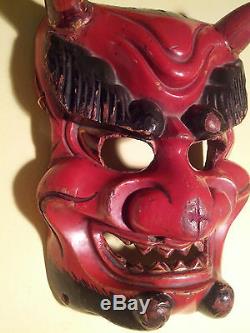
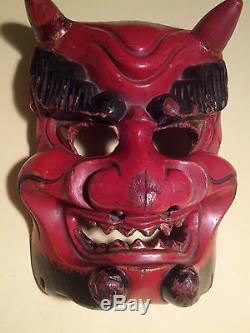


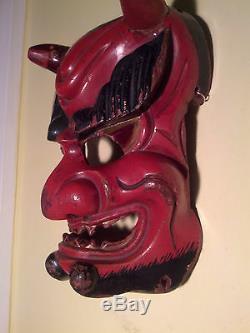
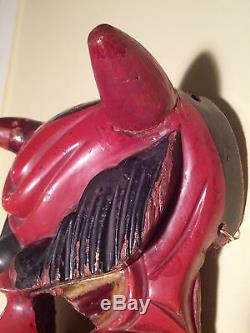

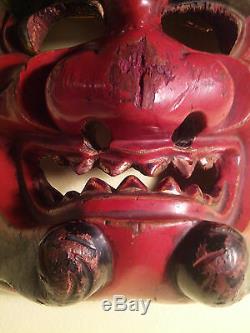
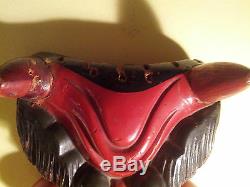

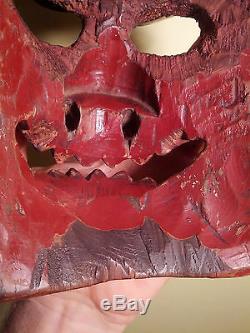


8.0 x 6.5 inches (20.4cm x 15.8cm). Here is an absolutely stunning work of antique art by a Japanese Artisan. This is particularly exciting as its clearly been used/danced as attested by.. The chin area of the mask has a heavy and aged patina against the natural wood area from the wearer's sweat. There are not just two, but four (4) holes to loop string into and tightly secure the mask to the wearer's head.
The reverse of the nose has been ergonomically recessed for the wearer's comfort. Setsubun is a Japanese festival celebrated on February 3rd which is the day before the first day of spring. This festival generally precedes the Lunar New Year.
Thus, it was also referred to as New Years Eve in the ancient ideal. The Japanese celebrate this festival by throwing roasted soybeans outdoors to chase the naughty ogres or bad spirits (known as Oni) out of the home and bring happiness and good luck for the following year. For some families, the father is dressed up like an Oni and the family members throw roasted soybeans at him outside the house. While throwing beans, they shout, Oni wa soto! Which means Get out, Oni! Everyone then eats the roasted soybeans as a treat one for each year of their life plus one extra for the coming year. Onis historically are thought of of beastly creatures in Buddhist underworld, where the red aka-oni and the blue ao-oni torment sinners. Made of a single block of highly aged wood (likely 2+ years of aging).This is a dying art unfortunately which has been telling historical arts for thousands of years. Last I knew, there were a dozen or less master mask makers in the greater Tokyo area.
Most folks wear plastic Oni masks for setsubun these days. Its exceptionally rare to find a used/danced Japanese piece. The piece would have originally had some hair that seated in the small round holes at the top of the mask as well. That all said, its high quality, antique, danced, and its condition is commensurate with its age... So its a bit of a shame that they would loose sight of this piece's cultural importance.
Gold paint used originally on the eyes, teeth, and around the horns... Again attesting to the quality of the piece as it was originally created. Other masks of my collection might be up: Check out my other items.
The item "Antique, DANCED, Japan/Japanese Wooden Ao-Oni Mask used in annual Setsubun" is in sale since Saturday, May 24, 2014. This item is in the category "Antiques\Asian Antiques\Japan\Masks". The seller is "maskmonger" and is located in Freeport, Maine.
This item can be shipped worldwide.
- Type: Masks
- Region of Origin: Japan
- Age: 1850-1899
- Primary Material: Wood
- Maker: Unknown
- Original/Reproduction: Original
- Color: Red

